The Dramatic Impact of Low Digital Adoption on Software TCO

Every year, organizations worldwide waste an average of $1.4T on digital transformation projects that have no actual impact on business operations and the bottom line. And this figure accounts for 70% of the global investment in digitization processes, meaning that almost 3/4 of digital initiatives are unsuccessful.
Such a high failure rate is often rooted in problems such as pursuing the wrong initiatives or the lack of awareness of current business processes that need to be improved.
Yet, there is another barrier to successful innovation that dramatically affects the success rate of digital initiatives: Low digital adoption.
Low digital adoption derives from the lack of continuous training and performance support and prevents companies from reaping the potential benefits they would gain from the introduction of new and more efficient processes by dealing with a workforce which is not fully capable of leveraging modern technology.
When we review the costs associated with low digital adoption, we find that they are a) direct and b) indirect. In terms of direct costs, low digital adoption renders change processes (and the correlated investment) ineffective. Indirectly, it leads to higher costs of ownership for software applications as we’re going to see in this article.
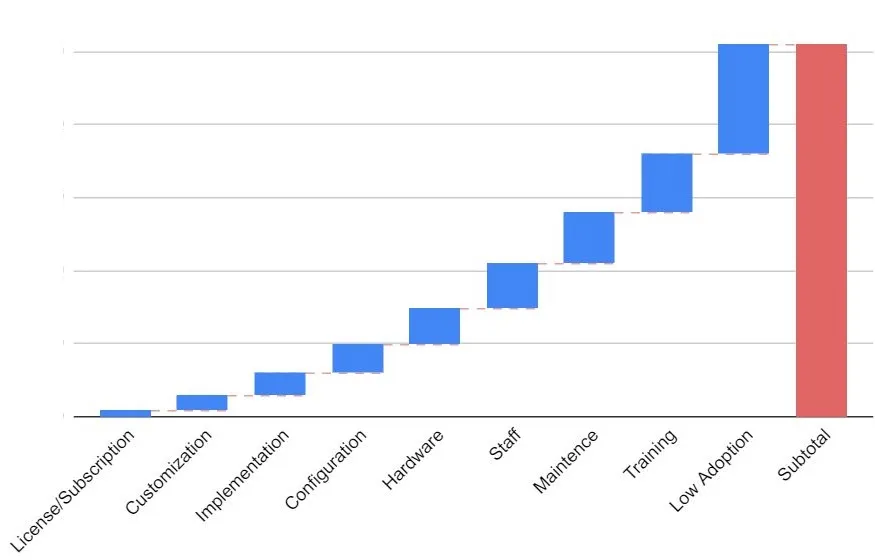
Table of Contents
Traditional Software TCO Model and Low Digital Adoption
The anatomy of a software implementation project is broken down into many moving parts. Implementation requires time, people, coordination, and support.
But perhaps the most surprising factor tied to rolling out new software is the associated costs that organizations incur after successful implementation in order to see a real ROI.
The original purchasing costs of software projects for both licensing and subscription-based models are self-explanatory. And most of us are aware of the hidden costs associated with software namely customization, deployment, maintenance, training, infrastructure, and personnel.
When you consider the total cost of ownership, the licensing or subscription fee only represents a tiny portion of the sum.
So, it’s important that all of these additional costs are included in the budget for every software roll-out or migration project. And this doesn’t seem to always be the case.
According to a joint study by McKinsey and Oxford University, researchers found that on average, large software projects run 66 percent over budget and 33 percent over schedule.
How can you reduce the TCO and guarantee the ROI for software?
The crucial factor which most organizations fail to recognize is that complex applications require continuous training in order to be viable.
Not only do companies need standard training plans in place in order to achieve targets and objectives, but also provide continuous training to support digital adoption efforts.
Continuous training and performance support are necessary now more than ever because modern software applications are characterized by fast release cycles. This usually means that end users have to learn how to proficiently work in software and perform processes again and again but they lack the right support.
Digital transformation requires employees to be fully capable of effortlessly carrying out digital tasks. And if you’re relying on one-off activities, such as software onboarding courses, to make sure that employees are highly skilled and fully operative in any software environment and with any digital process, this simply will not suffice.
What the market is showing is that high-growth companies investing in technological solutions, which foster continuous training, are proving to be more profitable. Comprehensive training leads, in fact, to a 218% higher revenue per employee, as reported by a 2019 Deloitte study.
This indicates that the correlation between the lack of performance support and training leads to low digital adoption. And the costs connected to low digital adoption are very high as we’re about to see.
In this blog post, we take a deeper look at a list of costs connected to the lack of continuous software training as well as the additional costs associated with low digital adoption.
The Costs of Not Investing in Continuous Training Technology
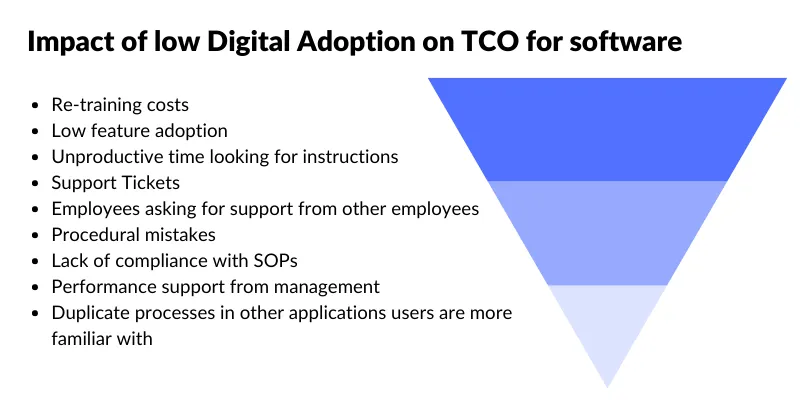
1. Retraining Costs
When we think of total training costs, they are likely to include things like onboarding, administration time, materials, management and staff support as well as the time needed for the employee to get up to speed and become operative.
According to the 2018 Training Industry report, the average cost of employee training varies across different company sizes. Large corporations spend on average $1,046 per staff member.
What most training budgets fail to consider, though, are the costs associated with retraining.
In less than a month after standard onboarding and training sessions, without retraining people tend to forget up to 70% of what they learned. For this reason, innovative companies are favoring microlearning solutions that help employees overcome issues connected to the forgetting curve.
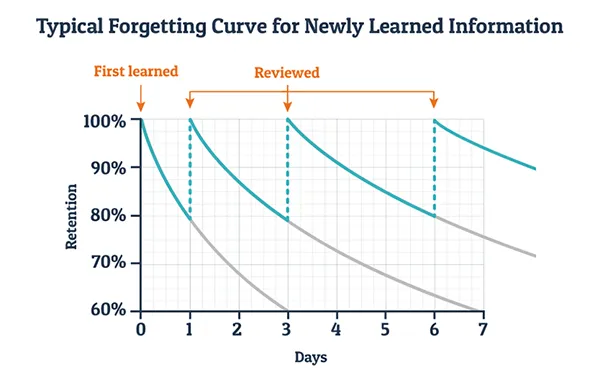
According to a report released by the World Economic Forum, the costs associated with retraining workers from current roles to new, viable, desirable, and growing roles equates to $34 billion in total or $24,800 per worker on average.
Retraining costs connected to the absence of a performance support solution largely contribute to high TCO for software.
2. Low Feature Adoption
Underutilized software is a huge problem
In 2019, software companies invested up to $29.5 billion dollars in features rarely or never used.
Why is this number so high? To face the challenges that businesses face today, employees are required to use more software applications than ever before. And such applications are becoming always more complex in order to support the objectives of businesses in the digital era.
The under-utilization of product features means missed opportunity for users to see the true value in a product and leads to low efficiency.
In a study conducted with our customers, we discovered that on average, users (including advanced users) only interact with 40% of the features in software applications they are required to use.
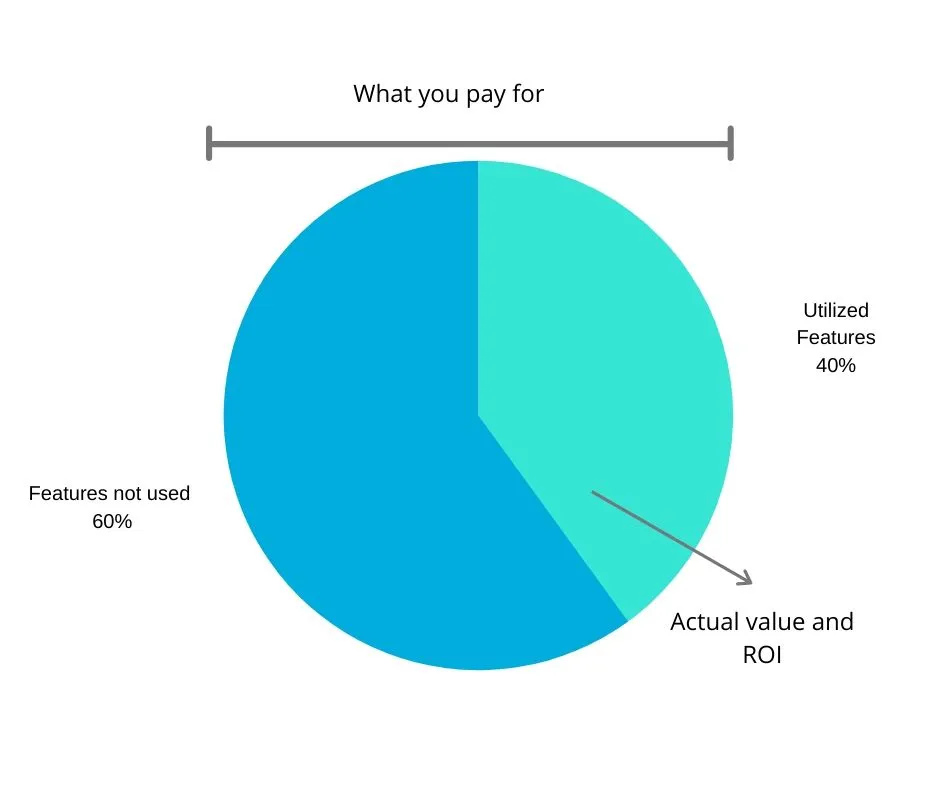
Most companies are on board with introducing new software that supports their business goals, but due to the lack of motivation, engagement, and continuous support, users aren’t leveraging the power of advanced features and only scratch the surface in terms of software capabilities.
This is the reality of underutilized software in the workplace, and despite companies paying 100% of licensing or subscription fees, 60% of these fees don’t lead to any sort of return on investment.
3. Unproductive Time Spent Looking for Information
How much time is your team wasting each day trying to figure out how to accomplish tasks in software?
According to data from Robert Half Technology and confirmed by research issued by the Harvard Business Review, employees could be losing more than two working weeks a year, which breaks down to 22 minutes a day. This means that on an average workday, your employees are spending significant time looking for information or dealing with software-related issues that impact productivity.
So, how much does this inefficiency cost your business? Well, If you calculate a 40 hour work week with an $80,000 annual salary, this costs around $3,700 per year just for one employee.
Multiply this amount for 1,000 staff members in a particular division and you are looking at around $3,700,000 per year just in time spent looking for information!
4. Support Tickets
Support ticket costs are amplified by support time.
According to The Zendesk Benchmark, it takes an average of 24.2 hours to provide a first response to an internal support ticket (caveat: data was collected 2012).
In some cases, this can mean that the issue is preventing your team from completing a task or a project. In other cases, it can mean preventing staff from supporting your customers. This leads to internal costs connected to inactivity and direct losses derived from poor customer experience.
Overall, inefficiencies in support assistance waste valuable time as your team waits for their issue to be resolved.
Zendesk also reports that internal support desks receive an average of 492 tickets per month, with 69% of internal support tickets being resolved in one touch.
According to research by MetricNet, the cost per ticket varies from $2.93 to $49.69, with an average of $15.56 per ticket request. The average cost per minute for managing a ticket is $1.60
These metrics indicate a clear discrepancy in structure and setup of traditional internal training and support. Since over 50% of internal support tickets can be resolved in one touch, it is possible to prevent these tickets from even being submitted in the first place with proactive support.
Decreasing the number of tickets your support team receives has a direct impact on ownership costs. This also means that your staff has more time to continue their work.
5. Asking Colleagues for Help
Everyone wants their questions answered as quickly as possible, and sometimes, asking your colleague for help seems like the best and quickest option.
If we look back at the costs related to unproductive time spent at work, we know that an average of 22 minutes a day is lost on searching for information.
And if team members reaches out for peer support, which wastes even more time, this figure could possibly double.
Data proves that it takes up to 30 minutes to refocus after a simple distraction. This means that a simple question like, “where do I find the report?” is a disruption that can have drastic consequences on team productivity.
Stopping work to answer questions that could have been resolved by the use of self-service support needs to be prevented at all costs.
With a self-service work culture and the right technology that provides proactive support, your team can solve problems on their own before going to someone else and asking for help.
You can easily save time for you and everyone at your business by encouraging independent problem-solving methods and offering proactive self-service support options.
Producing the best results involves maintaining focus without unnecessary interruptions. Introducing new technology without investing in proactive support might affect productivity and generate indirect costs.
Technology is a double-edged sword in most organizations — it can be an enormous time-saver, but it can also be a drain if things aren’t working well or people don’t know how to use the tools provided to them. – John Reed, Executive Director of Robert Half Technology
6. Procedural Mistakes
We are all human and sometimes make simple mistakes. This will happen.
But systemic procedural errors in business operations are costly for your business.
Let’s review a common occurrence: mistakes connected to wrong data entered through manual processes. If we take the average benchmark of a 1% error rate in manual data entry, what does this actually mean for your business?
If you multiply each mistake for every time information is moved from one system to another, the effect is compound and it is not uncommon for event administrators to operate with systemic data problems that constantly need to be monitored and cleaned up as just “part of the job.”
What does this mean in terms of costs?
An easy way to conceptualize these mistakes is to use the 1-10-100 rule, also known as the cost of quality rule. This common business concept is a rule-of-thumb model that helps organizations understand the value of error prevention.
It costs $1 to verify data accuracy at the point of entry, but $10 to correct or clean up data in batches, and $100 (or more) per record if no action is taken to amend the mistake – including the costs associated with churn, turnover, and other inefficiencies. Not investing $1 in error prevention leads companies to spend 100X more down the line to correct the issue.
Multiply this by the number of employees and processes at your business and you get a better sense of the financial repercussions associated with procedural mistakes.
Implementing and enforcing good standard operating procedures allows companies to save time and money, reduce onboarding costs, increase performance, empower their workforce, and enable delegation processes.
Without continuous training and support, employees fail to comply with standard operating procedures (SOPs), which leads to mistakes, frustration, and higher costs to fix quality problems that shouldn’t have occurred in the first place.
7. Lack of Compliance With SOPs
SOPs are necessary because they create consistency and quality control. Your business might currently be investing a lot of time into creating standard procedures in order to increase business speed, productivity, and efficiency. But if employees fail to comply with standard operating procedures, all your efforts are in vain.
What we have to take into account with SOPs for larger companies is, for example, the diversity of the workforce that may not be used to a certain way of “doing things”.
When we don’t follow these homogeneous processes, we increase the risk of error.
Costs connected to low compliance with SOPs are linked to inefficient communication paths, poor quality assurance processes, siloed structures, the inability to delegate tasks (and subsequent loss of productivity if an employee is absent), and low peer accountability.
All these elements affect the bottom line as you might end up losing customers or missing opportunities due to poor SOPs. Such costs are amplified by the lack of proper training and support.
8. Management Time
Managers are responsible for onboarding and training their employees. But if, on top of that, they are often requested to provide a) First level support to employees who can’t complete a task in a whatsoever system or b) Solving issues that employees caused due to the inability to properly carry out a process. And this leads to additional costs generated by new technology.
As the average team manager salary in Europe (according to glassdoor) is approximately $73,000 per year, spending an hour a day to support employees in digital processes leads to $9,125/year for management time spent in support tasks for every manager in the company.
Without the right technology in place to provide constant self-service support for employees, this issue generates additional indirect costs linked to software.
The lack of digital skills leads to uncertainty in the workplace. Every time a manager needs to provide performance support to their employees who struggle to achieve their desired outcomes in software applications, your organization faces new indirect costs linked to inefficient support.
9. Duplicate Processes
Duplicate processes occur when employees carry out tasks twice in separate environments. This lead to direct costs connected to owning and maintaining two different solutions and indirect costs that derive from the time spent repeating tasks or importing data from one solution to another.
The issue is often connected to low acceptance rate and employee push-back with new applications.
Duplicate processes in data management, for example, are extremely common and also often overlooked. And the issue often leads to errors or data silos.
Digitization leads companies to acquire a huge amount of data which needs to be accurately processed at speed. If data is not imported correctly or companies don’t enforce data centralization problems start to occur.
For example, when looking at the effects of such issues on customer experience, Gartner quantified the impact of bad data management, identifying that bothering your customers with irrelevant messages at an undesirable time can result in a 25% reduction in potential revenue gains.
Poor digital adoption is one of the main culprits in this case. And the problem grows as employees continue to use old platforms they’re more familiar with while also having to update information in newer platforms.
Instead of leading to higher efficiency, your re-platforming projects can result in wasted time as your employees perform the same task twice in separate environments because of their workflow and habits.
This redundancy ties back to resistance to change. When employees face uncertainty and feel that they aren’t skilled enough to perform tasks in a new ecosystem (combined with the fear of making mistakes), they, quite naturally, will prefer to work in a system that they are familiar with.
Instead of adapting to newly introduced digital processes, your staff might either reject the new platforms you’re implementing altogether or keep carrying out processes as they used to.
The costs here add up: Productivity, efficiency, quality, and management are all affected.
Implementing Digital Adoption Software to Lower Total Costs of Ownership
There are ways to prevent these costs. And yes, it might seem ironic that technology, which is designed to make our lives easier, appears to be the main culprit for this large gap in work inefficiency.
But there is a common misunderstanding about technology which causes most businesses to continue making the same mistakes when it comes to technology in the workplace.
It is the idea that software is a one-size-fit-all solution which will be the silver bullet that completely changes the way you work. Technology was never created to be a ‘one-and-done’ solution.
When it comes to reducing TCO for software, the answer is an investment in your digital adoption strategy through continuous training and performance support by implementing a digital adoption platform.
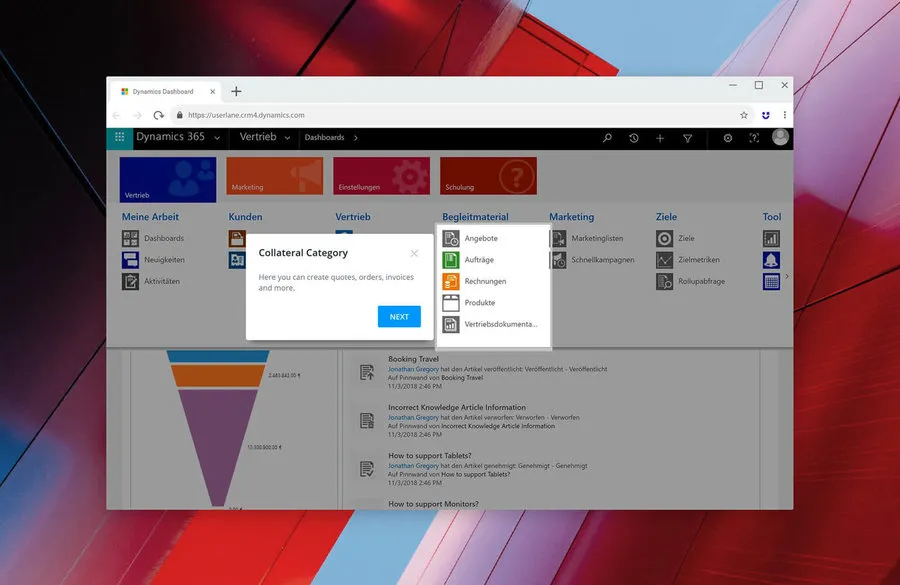
Digital adoption happens when users are able to fully master new technology and successfully carry out digital tasks for specific purposes.
A digital adoption platform facilitates this process by providing continuous in-software training and performance support.
This means that software users are guided through digital processes in real-time, directly in the application they’re using.
A digital adoption platform (DAP), such as Userlane, doesn’t just provide in-app onboarding and training. It also provides constant proactive or on-demand support for users performing digital tasks.
A digital adoption platform provides every software application with a guidance layer that supports users in real-time and step-by-step through any interaction with a software interface and digital processes.
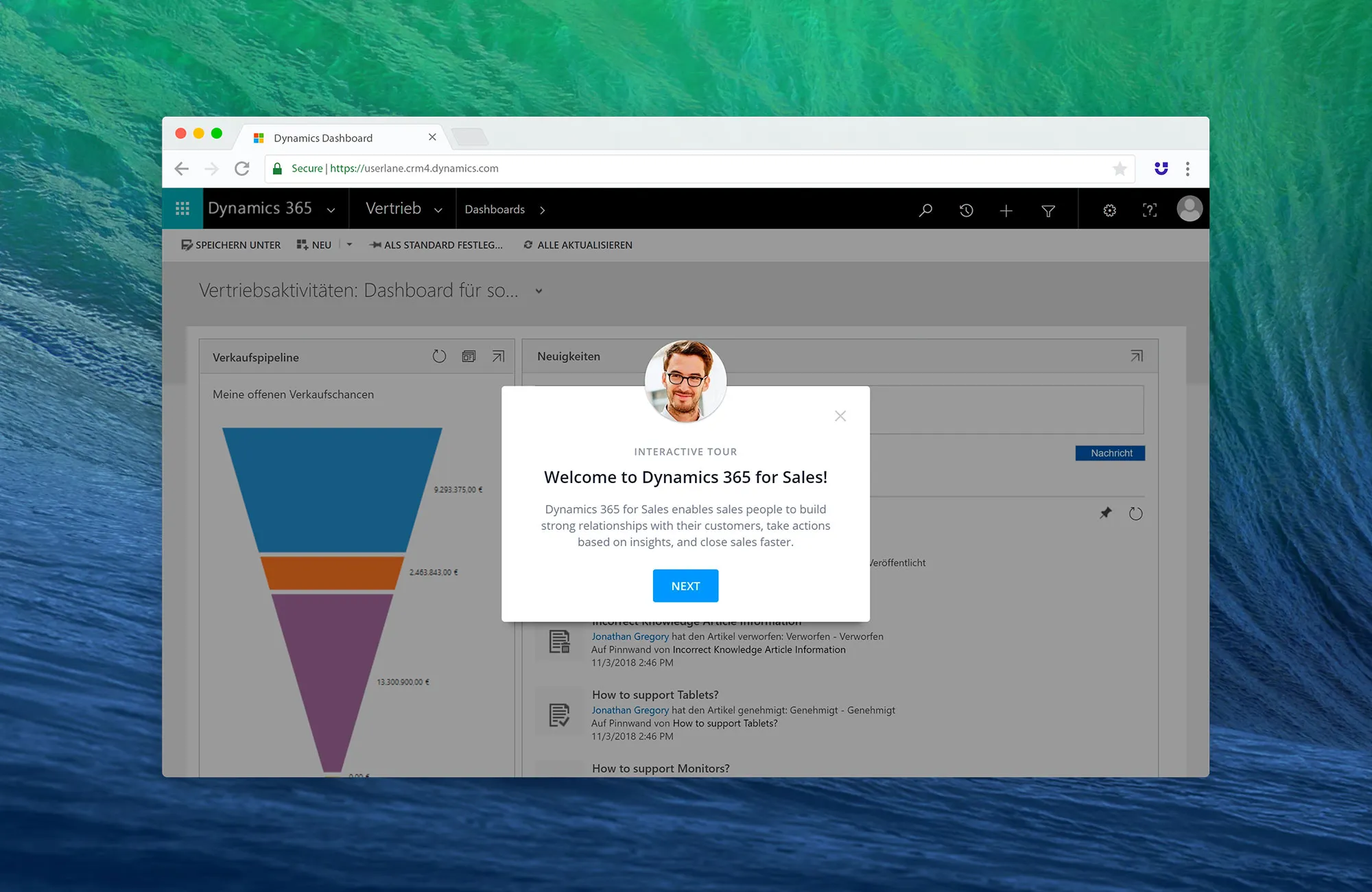
When implementing a DAP, the effect is immediate: Instant software adoption.
Increased software and digital adoption provide higher return on investment as it dramatically reduces TCO for software.
Implementing a DAP generates ROI by:
- Eliminating training and retraining costs
- Increasing feature adoption (also for the most advanced features)
- Empowering employees to be self-sufficient in software applications without looking for information online or in handbooks, watching tutorials, or attending classes
- Increasing productivity in software
- Reducing support tickets
- Reducing the risks of procedural mistakes
- Making sure that employees comply with SOPs in digital processes
- Eliminating the need for external performance support (from peers or management)
- Eliminating resistance to change and motivating users to immediately switch to a new platform
- Reducing time for software roll-outs (eliminating the need for instructional design processes, TTT activities, and training)
Implementing a digital adoption platform increases the success of innovation initiatives through continuous training and performance support.
Without such premises, the likelihood that digital transformation processes will fail is enormous.
If you want to boost the success rate of your change processes, reduce TCO for software, increase speed for software rollouts, and create a better employee experience by eliminating uncertainty and frustration, you need to define a solid digital adoption strategy and implement a digital adoption solution. Let’s talk. We can help.

